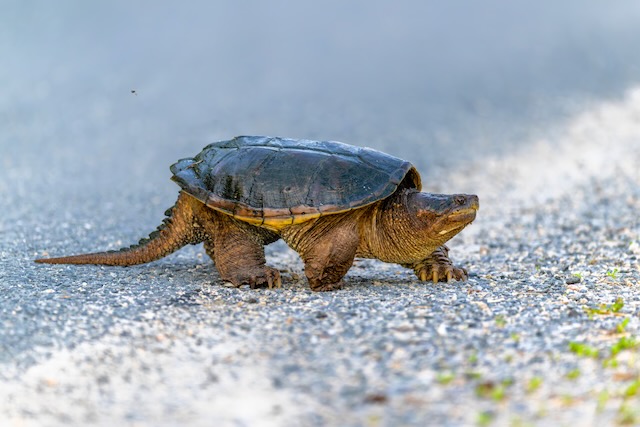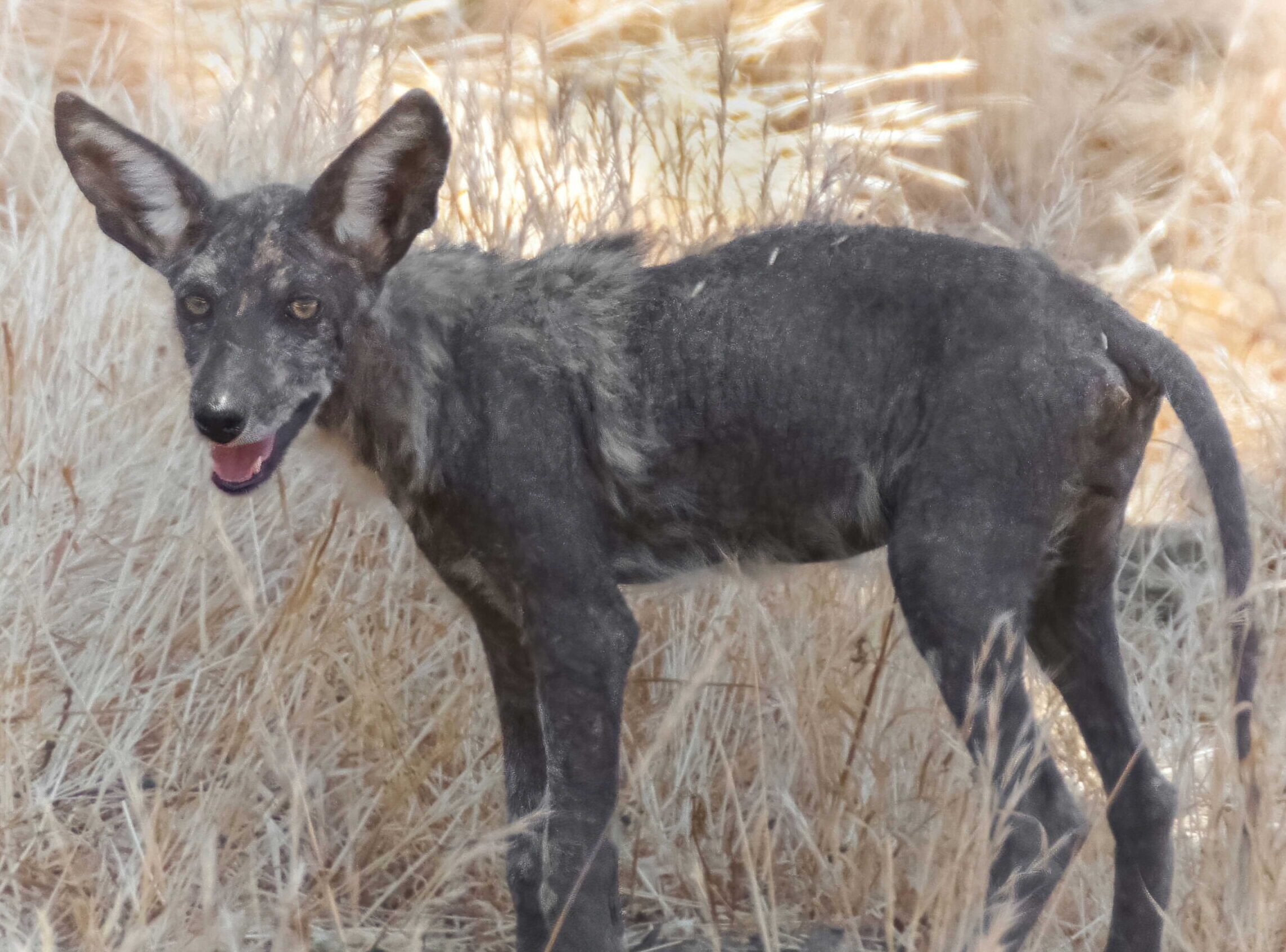Spring highways see increase in cold-blooded commuters
Texas A&M AgriLife experts share reasons for turtle sightings along roadways, ways to help
Forget the chicken — have you ever wondered why the turtle crossed the road?

Throughout the warm days of spring and early summer, drivers across Texas will likely encounter an intrepid turtle attempting to cross one of the many lanes crisscrossing the state. It turns out, these four-legged reptiles aren’t simply enjoying the beauty of a Texas spring — they’re fulfilling a biological imperative.
“Common freshwater turtles typically begin mating between March and July,” said Danielle Walkup, Ph.D., Texas A&M Natural Resources Institute research assistant professor in the College of Agriculture and Life Sciences Department of Rangeland, Wildlife and Fisheries Management. “Then, later in the spring and early summer, they’ll start moving and searching for good nesting spots.”
A dangerous journey
Texas is home to roughly 26 semi-aquatic freshwater turtle species that begin emerging from waterbodies to lay eggs on land around May. While nesting specifications vary by species, females typically search for an area of soil with sufficient moisture, but far enough away from a body of water to prevent the nest from flooding.
“They’re seeking an area that is elevated to some degree,” said Toby Hibbitts, Ph.D., Texas research scientist with the Natural Resources Institute and curator of amphibians and reptiles at the Biodiversity Research and Teaching Collection housed in the Department of Ecology and Conservation Biology. “Many times, a road built across a waterway is the highest point nearby, so females will build their nests right next to the road.”
As one might expect, Hibbitts said this can often result in mortality.
According to a 2016 study published in Herpetological Conservation and Biology, researchers documented 850 road-killed turtles over a four-year period along a single stretch of road spanning an East Texas lake.
Even turtles that don’t build their nest adjacent to a roadway may still be required to cross one in search of an ideal nesting area.
“Although we do find turtles in the middle of Bryan-College Station, I would say folks living in more rural or less urbanized areas need to be more aware when driving during turtle nesting season,” Walkup said.
What drivers can do to help
Human safety always takes precedence when encountering a turtle or any other wildlife species when driving.
Walkup said that if it is possible, drivers can simply slow down and navigate around the turtle.
If a motorist is compelled to move the turtle to safety, Walkup said they should first pull over and safely park. Once the driver has ensured that no traffic is coming, they can simply pick the turtle up by grasping its shell on either side and transport it across the road in the direction it was heading.
Alternatively, a stick or something available in a vehicle can be used to encourage the turtle to continue walking across the road.
While the most commonly seen turtles are likely red-eared sliders or box turtles, common snapping turtles may also be encountered.
“Snapping turtles can be large and slow moving, and you also need to be cautious because they can bite at you in defense,” Hibbitts said.
While it may be tempting to pick up a snapping turtle by its large tail, Hibbitts said the appendage is too fragile to hold the animal’s full weight and doing so can result in injury.
“If I’m moving one, I usually pick it up partially off the ground with the tail, then place my hand on the underside of the shell and hold a back leg,” he said. “They do have long necks, so you want to try to avoid the front half of a snapping turtle.”
The nesting and hatching process
Once the female turtle locates a nesting area deemed sufficient, she uses the claws of her back legs to excavate a hole in the soil. Once the clutch of eggs is laid, she covers them with the excavated soil and returns to her initial location.
Walkup and Hibbitts said that clutch size varies by species and is related to the size of the female turtle — the larger the female, the larger the clutch size.
For example, a red-eared slider may lay anywhere from 10-20 eggs, Hibbitts said.
Walkup said the sex makeup of some turtle clutches is determined by the nest temperature during incubation, known as temperature-dependent sex determination.
Depending upon the turtle species, temperature variance within the nest — either high or low — can lead to more males or more females hatching.
As the eggs are incubating, they are extremely susceptible to predation from animals such as raccoons, opossums and skunks. Known as mesopredators, these typically medium-sized animals are in the middle the food chain.
“The success rate of freshwater turtle nests is not very impressive,” Hibbitts said. “It’s probably in the neighborhood of 10%-25%.”
Hibbitts said this relatively low success rate makes the survival of large female turtles important for sustaining populations.
If the eggs are not predated or the nest destroyed, hatchlings emerge from the nest following an incubation period of two to three months.
Walkup said this is a very precarious time as the juvenile turtles disperse in search of food and habitat, because they are easy prey for many animals.
“Considering the many threats turtles face throughout their lifespan — ranging from predation to habitat loss and poaching — it’s not the easiest life,” Walkup said. “I think that’s one reason I find them such a unique part of our state’s natural history.”





